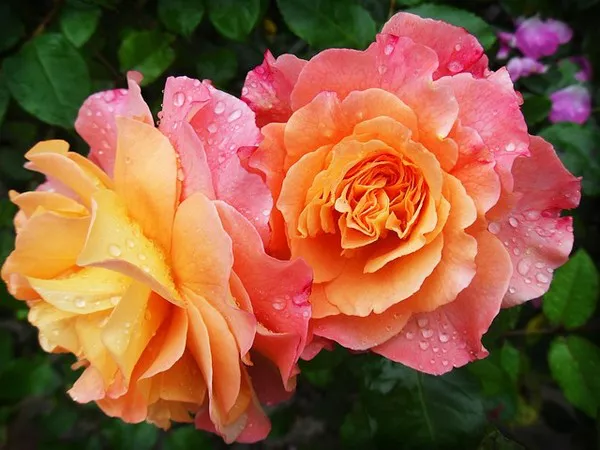Flowers have been a symbol of beauty, elegance, and emotion for centuries. Whether they’re given as gifts, used in events, or simply enjoyed in gardens, flowers hold a special place in our hearts and culture. However, every floral display is ephemeral by nature, leading us to wonder: How long do flowers actually last? This article delves into the factors that influence the lifespan of flowers, shedding light on their biology, care techniques, and the intriguing process of senescence.
The Lifespan of Flowers: A Delicate Dance of Biology
The lifespan of a flower is a complex interplay of biological processes that begin from the moment the flower bud forms. The transition from bud to full bloom is a carefully orchestrated process controlled by various internal and external factors. It’s essential to understand that flowers, much like all living organisms, have a natural life cycle that encompasses growth, reproduction, and eventual decline.
Factors Influencing Flower Longevity
1. Species and Variety:
Different flowers have different lifespans due to their genetic makeup. Some flowers are inherently short-lived, while others can last for weeks. For instance, roses are known to have a longer vase life compared to delicate blooms like lilies.
2. Environmental Conditions:
Environmental factors play a significant role in determining how long flowers will last. Temperature, humidity, and light exposure are crucial. Cut flowers typically have a shorter lifespan than flowers left on the plant, as they are no longer receiving nutrients from the parent plant.
3. Harvesting and Handling:
The moment a flower is cut from the plant, its supply of nutrients and water is severed. Proper handling during harvesting, transportation, and storage is critical. Damaged stems or leaves can accelerate the wilting process.
4. Water and Nutrient Uptake:
Flowers continue to draw water and nutrients through their stems even after being cut. Placing them in water with flower food (a mixture of water and nutrients) helps prolong their life. Air embolisms, where air bubbles block the water-conducting vessels, can be detrimental.
5. Ethylene Exposure:
Ethylene is a naturally occurring gas that some fruits and flowers produce. It speeds up the aging process and can lead to wilting. Keeping ethylene-producing fruits away from cut flowers can extend their lifespan.
6. Microbial Growth:
Bacteria and fungi can clog stems, impeding water uptake and causing flowers to wilt prematurely. Regularly changing the vase water and ensuring the vase is clean can mitigate microbial growth.
Understanding Senescence: The Natural Aging Process
Just as humans age, flowers go through a process of senescence, which is the gradual deterioration of cells and tissues. During senescence, flowers undergo biochemical changes that contribute to their eventual decay. Ethylene production, loss of turgor pressure, and reduced ability to take up water all play a role in the wilting and browning of petals.
Care Techniques to Extend Flower Longevity
Trimming Stems: Cutting stems at an angle under water prevents air from entering the stem, maintaining proper water uptake. Remove any leaves that would be submerged in water, as they can encourage bacterial growth.
Fresh Water: Change the vase water every two days, ensuring it’s at room temperature. Warm or cold water can shock the flowers and impede their uptake.
Nutrient Supply: Use commercial flower food packets, which contain a mix of nutrients and additives that help flowers last longer. If not available, a homemade solution of sugar and a touch of bleach can serve as an alternative.
Placement: Keep flowers away from direct sunlight, drafts, and sources of heat. These factors can accelerate the wilting process.
Hydration: Before arranging flowers in a vase, submerge their stems in water for a few hours to allow them to hydrate fully.
FAQs
Q1: Can I extend the lifespan of cut flowers by refrigerating them?
A1: Refrigeration can indeed help prolong the life of cut flowers, but it should be done with caution. Flowers can be sensitive to cold temperatures, and freezing can damage delicate petals. If refrigerating, wrap the flowers loosely in paper or plastic to protect them.
Q2: How do florists keep flowers fresh for longer periods?
A2: Florists often use specific techniques to extend the longevity of their floral arrangements. These include precise stem cutting, meticulous sanitation practices, controlled temperature and humidity environments, and the use of floral preservatives to nourish the flowers.
Q3: Why do some flowers wilt faster than others in the same vase?
A3: Flowers have varying lifespans due to their genetic makeup and environmental preferences. When arranging different flowers together, some might release more ethylene, affecting the other blooms. Ensuring compatibility and proper care for each type can help maintain the arrangement’s freshness.
Q4: Is it true that adding aspirin or vinegar to vase water can extend flower life?
A4: While aspirin and vinegar are sometimes recommended as additives to vase water, their effectiveness is debated. Commercial flower preservatives are formulated based on scientific research, providing a more reliable way to extend flower life.
Q5: Can I revive wilted flowers?
A5: Reviving wilted flowers can be challenging, but there are a few methods to try. Submerge the entire flower in warm water for a few hours or try re-cutting the stem at an angle. If the petals are severely wilted, consider removing them to allow the rest of the flower to recover.
Conclusion
The lifespan of flowers is a fascinating blend of biology, environmental factors, and human care. Understanding the delicate dance of processes that influence flower longevity allows us to appreciate their beauty even more. By applying proper care techniques and grasping the science behind floral senescence, we can extend the joy of vibrant blooms and create lasting memories with the enchanting world of flowers.


